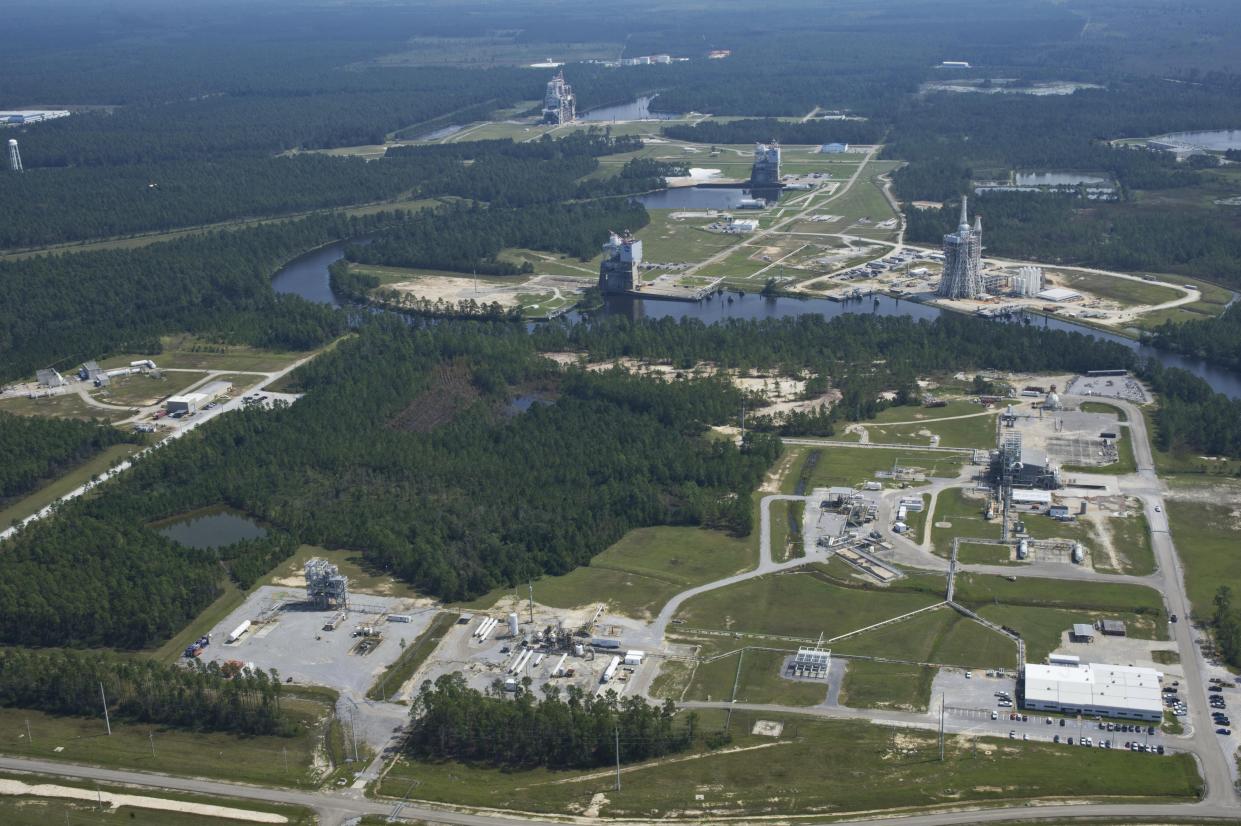SpaceX, other private space exploration companies, have Mississippi connection. See where

Stennis Space Center has been in the rocket engine test business since the 1960s, back when NASA fired up the powerful Saturn rockets that shook the ground around its isolated Hancock County complex.
When the moon landings were over, the experienced test crews adapted the concrete control bunkers and massive test stands for the space shuttle’s main engines.
As private aerospace companies began developing hardware for commercial space missions, they looked to Stennis, with its uniquely experienced workforce and $2 billion infrastructure, as their go-to proving ground.
Eventually, officials say, NASA may turn the keys for its deep space rocket over to such investors and entrepreneurs as the booming private space industry matures.
“As an agency, NASA is moving toward a model in which it purchases launch services and payload delivery capabilities, while not taking ownership of flight hardware,” said Kevin Power, head of propulsion test project management for the NASA Stennis Engineering and Test Directorate. “That is changing the landscape of the U.S. space industry and will require working closer with commercial companies and providers.”
NASA Stennis is well positioned for such a landscape, Power said. It can lease underutilized test infrastructure or land to companies in need of such facilities.
“At the same time, it will continue to operate large test stands in support of NASA’s SLS (Space Launch System) testing, as well as the site’s versatile E Test Complex, which features multiple test cells and can support a variety of companies and test projects,” Power said.
Stennis has had commercial testing agreements since 1997, when it partnered with the aerospace company Rocketdyne, a division of Boeing North American. NASA and Rocketdyne, now Aerojet Rocketdyne, tested engines for the United Launch Alliance’s Delta IV rocket on the large B-1 Test Stand at NASA Stennis. This year that agreement is coming to an end after 25 years.
Companies that have conducted tests or are currently testing at Stennis include Blue Origin, Firehawk, Launcher, Aerospace Rocketdyne, Lockheed Martin, Northrup Grumman, Orbital Sciences Corporation, Rolls Royce, Stratolaunch, Ursa Major, Vast and Virgin Orbit.
One of NASA's best-known partners was SpaceX, which announced in 2013 it was opening a test operation at Stennis for parts of its Raptor reusable rocket engine. In 2014 and 2015, SpaceX tested a subscale version of the main injector and oxygen pre-burner for its Raptor engine. A SpaceX official called the South Mississippi site a “great spot to do developmental testing.” The company now has its own 4,000-acre rocket development facility in Texas.
However, high-pressure testing still is only available at a few locations, including NASA Stennis. As a result, SpaceX returned to the site in 2016 to conduct three years of testing on its full-scale oxygen pre-burner for its Raptor engine.
Stennis also has entered into several long-term lease agreements with commercial companies over the past several years to support their test operations.
Relativity Space, an aerospace startup with the ambitious goal of building the first autonomous rocket factory, expanded its partnership with Stennis last year and anticipates investing $267 million in development of its test complex at Stennis, creating up to 600 jobs over the next five years
Relativity Space already has conducted more than 2,000 hot fire tests on other test facilities at Stennis. Testing in the expanded facility is expected to begin later this year.
At the same time, Rocket Lab is investing in the development of a test complex at Stennis and expects to create as many as 40 jobs as their work progresses.
Power said as more companies develop space plans and programs for both low-Earth orbit and deep space, there will be an increased need for access to test facilities.
“This is especially true for small companies who are seeking to gain a foothold in the industry and do not have their own test infrastructure. In response, NASA Stennis is constructing a new test location that will fit the partner-managed model in which NASA Stennis provides a location and facilities, while the partner company provides test setup and conducts end-to-end test projects,” Power said.
The aerospace and defense industries are rapidly changing, Power said, creating an extremely competitive environment unlike any in the past, and Stennis is evolving to keep up.
“The future of commercial testing at NASA Stennis looks bright. A talented team of engineers has been working for some time now to develop and execute plans to enhance and elevate NASA Stennis capabilities and services for commercial companies. A key focus is enabling companies to speed up the development and testing time needed to fly to space,” he said.
Power pointed to the roster of companies who continue to utilize NASA Stennis services and the decisions by Relativity Space and Rocket Lab to locate test facilities on site as "great testimonials about the value of NASA Stennis. Other companies are taking note of all the site has to offer — and we expect the value of NASA Stennis to continue to grow.“
This article originally appeared on Mississippi Clarion Ledger: SpaceX, other private space exploration companies have MS connection

